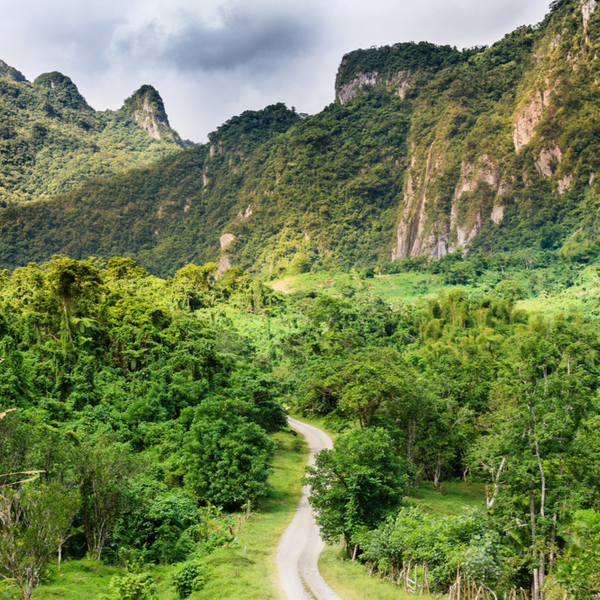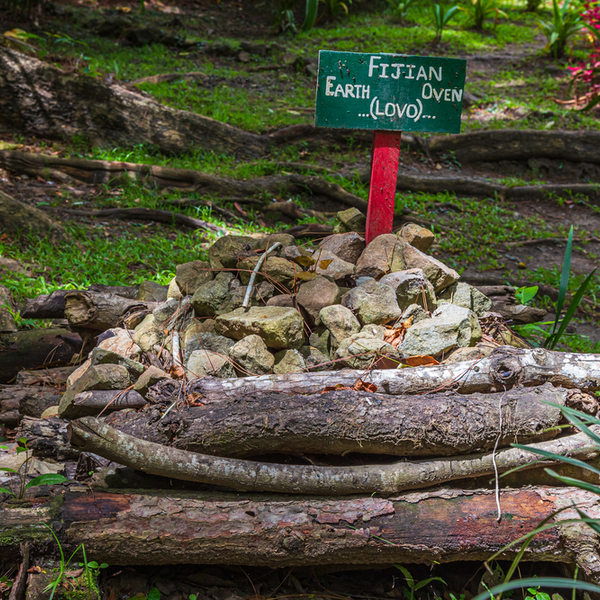Whether you’re flying into Fiji for some well-deserved downtime – or you’re up for a full–on adventure, it pays to look into some Fiji facts. It’s not all just coral-strewn sea beds and dense jungle playgrounds. Fiji’s a complex, vast, sprawling web of islands that hides some dark history, unique species and unusual customs. Of course, we’ve covered those, but we’re also clueing you in on how to retrace the route of the world’s toughest race, if you’re game?
1: It’s an explorer’s paradise…
Before you swoop in with plans to hop between all the Fiji islands in a fortnight, take a moment to consider this. There are over 300 islands to get to – and that’s before you even start counting the islets. Adding a further 540 destinations to your list could be doable – with enough time, a can-do attitude and some rudimentary sailing skills. Except, all the bountiful parcels of island life are spread out over 1million square kilometres of ocean. Which really does make Fiji a little larger than it appears at first sight in the atlas.


2: You can snorkel in waters managed by tribal chiefs…
Eco-tourism is a phrase that can be played a little too fast and loose for our liking. Though, happily this isn’t the case in Fiji, and more specifically, the Namena Marine Park. In these waters, a collective of 10 local village chiefs are managing the seas. So, when you pay your dues to visit the reserve, you not only get to snorkel in stunning locations – but you’re also preserving the area for the Kubulau Community. These are their traditional fishing grounds and, rather than simply keep the areas free from poaching and over-fishing, money raised here goes towards encouraging sustainable tourism.
3: It’s awash with endemic species…
Is there any greater travel thrill than experiencing something you can’t repeat anywhere else on earth? In Fiji, that particular travel niche is fulfilled by tracking down an endemic species or two. Fiji’s animals are all suitably exotic, but there’s a growing list of reptiles, birds and butterflies only found on these islands. On land, keep your eyes peeled for the small, but quite charming, Fiji Slender Skinks and Fiji Forest Geckos. In the sky, the sizeable Fijian Monkey-faced Fruit Bat likes to flit between the trees in the cloud forest on Taveuni. And in the water, there are blennies, eels, gobys, angelfish and wrasse that are all unique finds in Fiji’s oceans. Perhaps the best, and most beautiful sights are the island’s birds. And, here, it’s worth packing your binoculars. 34 species, including honeyeaters, parrots and silktails, fill the skies. Though, perhaps the most dapper chap is the male Azure-crested Flycatcher.


4: You can take on the terrain of the world’s toughest race…
In 2019, 66 teams took part in Eco-Challenge Fiji. Billed as the world’s toughest race, it saw 330 competitors run, bike, climb, swim and raft through the island’s jungle, rivers, beaches and mountains. Now, you might not want to race for 11 days straight without a break, but visiting some of the locations for the Amazon series lets you see for yourself just how taxing the race was. Hike through checkpoints, visit the islands by yacht or take on the rivers with experienced guides. Rivers Fiji are the team to speak to if you fancy a crack at checkpoints 17-18 from the race. An adventure through the rapids that requires more than a little paddle work!
5: Hats and sunglasses aren’t always appropriate…
The long accepted travel uniform of hats and sunglasses can land you in trouble in Fiji. Yes, you’ll be just fine if you’re lounging poolside or embarking on a jungle trek. But if you’re dropping in to mingle with the nearby villagers, it’s time to stow away the sunnies and pop your cap in your backpack. The only person allowed to wear anything atop their head in the villages? The village chief. So stick to the protocol and you’ll do just fine. While we’re here, it’s worth mentioning that it’s also off limits to touch anyone’s head as well.


6: You can time travel…
On the island of Taveuni it’s possible to time travel. A bold claim, but the island just so happens to have the International Date Line running through it. Straddle the line to be both in the past and the future. Hop over it to go back to yesterday or stand and watch in amusement as your fellow travellers hop back and forth. It might not be the same as flying over it which allows you to relive a whole extra day, depending on how far you go, but it’s still the closest you’ll get to fulfilling any Marty Mcfly aspirations.
7: The best Fijian cuisine is cooked in the ground…
If there’s the merest whiff of celebration in the air, Fijians cook up a feast. Though, instead of laying on a lavish buffet, you’ll see a large hole being dug in the ground. Called a ‘lovo’ – this is the spot where a fire – made from coconut husks is suitably stoked. Once toasty, stones are laid on top. Meanwhile, veggies, fish and meat are wrapped in banana leaves ready to place on the hot stones. Covered with more leaves – the feast is left to slowly roast for around three hours before serving. Happily, you don’t need to be invited to a Fijian wedding to experience the succulent results. Hotels will lay on a lovo – though for the real deal, it might be worth trying to get on a guest list…


Bonus: You can take your dark tourism curiosity to new levels…
We’ve all dabbled with a spot of dark tourism in our time. Peering into the catacombs in Rome, musing over the radioactive remnants in Pripyat and checking out the fallen barrier of the Berlin wall are all pretty sombre experiences. In Fiji, things take a smidge more sinister turn. Cannibalism was once rife here – and there are some tall tales peppered through the island’s history that you can definitely file away under spine-chilling. The 1850s were a particularly dark period where the taboo meal went from a cloak and dagger affair into more of an accepted hobby. As more settlers arrived and the word of Christianity spread cannibalism gradually died out.
Orbzii tip: If you’re in Fiji and wondering what to do and see, drop into the Fiji museum to learn more about the island’s long history of human sacrifices or swing by the grave of Udre Udre. A feared tribal chief, he’s thought to have eaten over 800 enemies. The stones around his grave are said to be his personal record of each one.



















